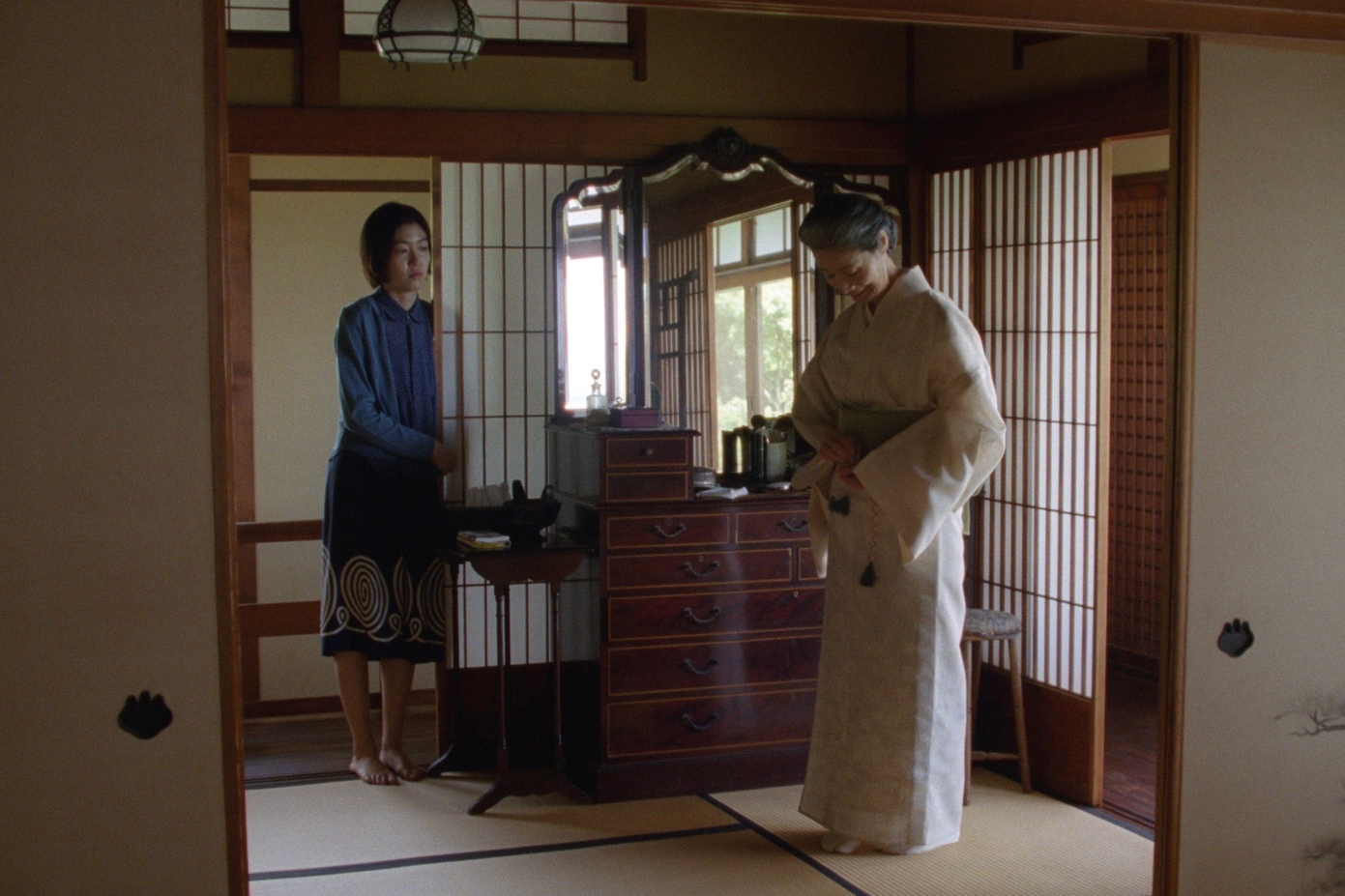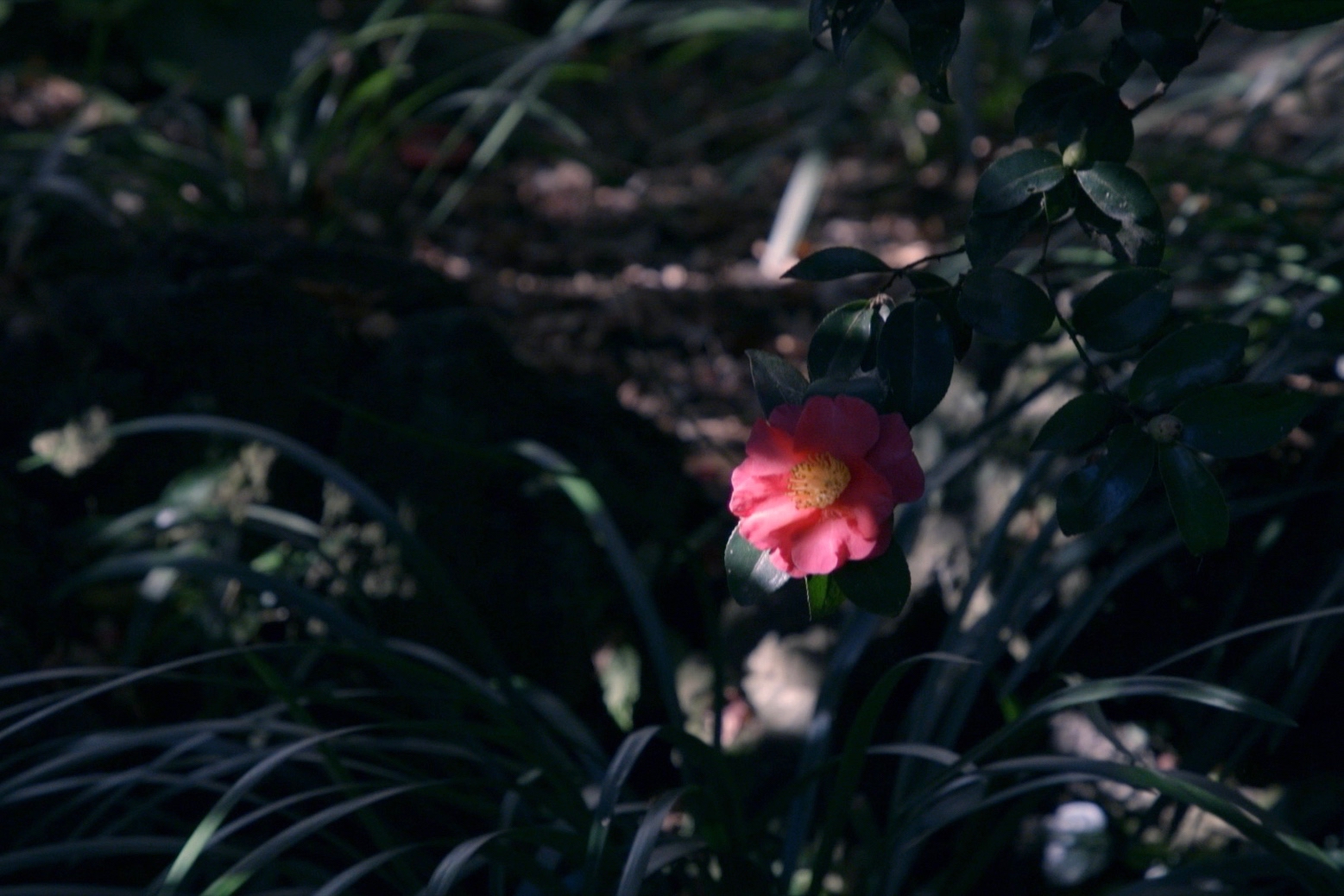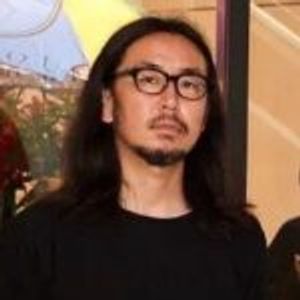Culture can be born out of a specific time and place, and yet, it possesses the ability to become timeless. In this series, “時音” TOKION invites people who are shaping culture today, to talk about the past, present, and future. We interviewed Yoshihiko Ueda, a photographer, who has worked on numerous advertising photos, including Suntory, Shiseido, and TOYOTA. Ueda, who has always used analog photography to capture transient moments, will release his first feature film, A Garden of Camellias (Tsubaki no Niwa), on April 9. Ueda shot the film over the course of a year; it evolves around the main characters: Kinuko (Sumiko Fuji), and Nagisa (Shim Eun-kyung). The narrative is a tapestry of their sentiments, on life and memory. The time flows serenely throughout the four seasons along with stunning images. The film focuses on fragments of life and memory that we tend to overlook, and uncovers truth about life buried in our daily lives.
Choosing Words Based on Characters’ Feelings
――I learned that you started to write down things that made you feel a sense of loss, albeit small, in your daily life — for example, when walking a dog, you realized that a house you were fond of was gone. And, this practice led to making a film. In the film, the camellias are growing from where the goldfish were buried. The film ends with a rainbow in the sky. While I had a sense of loss, I also felt that truths could be passed down to the future. In the process of making the film, did you think about the future?
Yoshihiko Ueda: Our life is connected from the past to present, and future—the time beyond. In this film, I wanted to portray the passage of time in a natural way. We live in a time that is impossible to predict, even the near future, and we sense that the future is getting increasingly uncertain. Under these circumstances, I think it’s hard for the young people to envision the future in a positive light, which in my days was possible. Perhaps those feelings are reflected in the film.
――The film has few characters, and not too much dialogue. The images were shot with great care; I was drawn to the details, the flow of time, the change in the characters’ emotions, and the dialogues. You also wrote the script, and I wonder how you came up with the lines and the language.
Ueda: The important dialogues in the narrative came up naturally while shooting the film. I modified the lines accordingly. There were times that the lines came up in my dreams. That was probably because I was thinking about the film all the time. There were quite a few instances that I suddenly came up with the lines when I woke up in the morning, and I wrote them down. I was possibly in a strange state, where I was not really asleep. The original script had already many similar lines, but maybe, in the course of making the film, I started to sense that those lines didn’t come from the characters’ heart.
――Since it is not a documentary, did you find it hard to rewrite the script when the timeline of the events changed back and forth?
Ueda: I shot the film chronologically over the course of a year. As we reached the last part of the film, Kinuko started to lose her physical strength, and she didn’t voice her concerns about retaining the house. She held back her words, and when she said something, it was based on her feelings at that very moment, so it changed from what had been planned in the first place. When Nagisa was sweeping the fallen leaves, she said, “No matter how much I sweep them today, there will be more fallen leaves tomorrow.” This line, as well as the poetry reading, were added later.
――The exchange between Kinuko and Nagisa when they were sweeping the fallen leaves was unforgettable. I could feel the minor disagreement between them. The scene when Nagisa reads the poem, “How is a Song Made?” by Akiko Yosano, was memorable as well. Why did you decide to include a poem, and why did you choose this one?
Ueda: I like Akiko Yosano’s poems. I liked her perspectives on things, as well as her sensibility. She evokes the same sentiment that I feel for photography. I came across with the following poem by Akiko Yosano when I was young. I even tried to envision the scene.
How is a song made?
You watch it closely.
Love it a lot.
Give it a big hug.
What is “it”?
The truth.
Where is the truth?
It’s right near you.
Always with you……
Always.
With you.
I particularly liked this part. “Truth is right near you.” That is what I wanted to focus on in the film.
For example, if you see a butterfly moving its wings slowly right now, that is the only truth. I think we tend to forget to look at or feel, what is right by you. Our mind tends to focus on something far away, or in the past. Including myself, I wonder if a lot of us are not looking at the place we live now, or at the time that we are living in. I wanted to make a point with the poem, read by Nagisa, that we might not be paying enough attention to the present. It’s hard to live that way, but if we can do that, I think we can be happy.
My Only Interest Was to Find Out What the Outcome Will Be.
――A moment in time is captured in photos, while a film is made by editing footage. As a photographer, did you feel different about the way you faced your subject during the filmmaking process?
Ueda: It was not so different. I like portraits, and have taken photos not only of people, but also of landscapes and forests. I look at all of my subjects the same way. It feels like an exercise of giving back what you have received from them. In the past, I had the experience of shooting portraits of people like Andy Warhol and Robert Mapplethorpe who were older, and more accomplished than me, at that time. I felt fear and joy. Looking back, I think I also felt anxious, conflicted, scared, and irritated. And I questioned myself, if I was able to give back what they were giving me. I feel that I have been through this type of exchange hundreds of times, compared to anyone just living an ordinary life.
In that respect, I was interested to find out, what kind of film I will end up making. There are so many types of film directors out there, and I didn’t feel compelled to shoot a film myself. But, I also thought that there might be a film that only I could shoot. And, I thought that I might end up coming up with images that I have never seen before.
―― Did you make a film because you were influenced by someone or did you just want to shoot a film?
Ueda: I was not motivated by the idea that I wanted to shoot a film. I was interested in finding out what kind of film I would end up making, and how I was going to feel about the process. I had all sorts of ideas about making a film and it felt as if I had just picked up some ideas and turned them into a film.
――There is a sequence of Nagisa scooping up the goldfish. The sequence stood out, as it is out of focus, and blurred. I have seen some of your work that uses blurring to enhance the outline of the subject. It felt as if I was looking at a beautiful photo.
Ueda: The image is blurred to divert the viewers from the details and shapes of things in front of them. It prompts the viewers to imagine the colors and sense of existence, beyond the blur—in a deeper place. It is as if we are trying to uncover something that was buried deep, inside our memory.
“Can You See Truth That is Right by You”
――In the beginning of the interview, you shared your thoughts about the future. It resonated with how I felt about the goldfish scene. It also reminded me of what is happening in Tokyo nowadays. Old things were destroyed, and transformed into something new. It is not about good or bad. It is all about existence. It is our daily lives and it is our truth.
Ueda: Exactly. You can neither photograph the past, nor the future. Photography is about, “the present.” When we talk about our daily lives, we tend to contextualize it as something that is predictable and familiar. But, what we consider mundane is as rare as a miracle that cannot be repeated again. Photography can capture the “truth” of a moment. Wonderful photos have achieved that. It all depends on whether you can distinguish that particular moment or not. If you can, you are a step closer to the truth in this world. In short, it is about whether you become aware of the truth that is right by you or not.
――What would you like to express the most through images, photography, and other methods, in the post-Covid world?
Ueda: That is difficult. We live in a time with all sorts of restrictions, and can probably achieve only one-tenth of what we actually want to. I can look at what we are going through as part of the experience. I think that outside of the human world, nothing has changed. It is only just the way that people see and feel the world, that has changed. The cherry blossoms bloom as usual, but the sentiments of people looking at them have changed, since last year. Whether it is good or bad is uncertain; all we have now is the daily reality that we face every day.
Yoshihiko Ueda
Ueda grew up in Hyogo prefecture, and studied photography under Masanobu Fukuda and Taiji Arita. He became an independent photographer in 1982. He is a highly acclaimed photographer both in Japan and abroad, and have photographed a wide range of subjects, from portraits, still life, landscapes, architecture, to performing arts. He has also worked with advertising photography, and has won various awards, including the Tokyo Art Directors Club Grand Prize; the New York Art Directors Club Photography Award; or the Cannes Lions International Festival of Creativity Silver Lion. He has published 38 photography books between 1982 to 2020, and the latest ones are Forest: Impressions and Memories, 1989–2017 (2018),and Apple Tree (2017). As the head of Gallery 916, Ueda organizes photo exhibitions, and publish photography books. He received the Photographic Society of Japan Lifetime Achievement Award in 2014.
Photography Kentaro Oshio
Translation Fumiko Miyamoto






